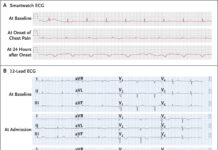29-year-old presented with multiple injuries after a motor vehicle accident.
A 29-year-old patient presented to the trauma hospital after he got into a motor vehicle accident. He was ejected from the vehicle during the crash after which he lost consciousness because of the impact. However, the patient was alert and oriented when he presented to the hospital. He endured several injuries, although, initial trauma assessment showed that he was able to move all four extremities.
Physical examination showed multiple injuries with an extensive degloving injury and anorectal dissociation The patient was taken for an emergent laparotomy immediately after he was admitted. The patient’s abdomen was left open for 2 days after the laparotomy because of abdominal compartment syndrome. He underwent several surgeries including bilateral chest-tube placement, end-sigmoid colostomy, anorectal reconstruction, closed reduction of a tibial fracture and tracheostomy. ربح مجاني
On the 3rd day after presentation, the patient’s neurological status deteriorated with a Glasgow Coma Scale of 3 T. Examination showed reactive pupil with no cough or gag reflex. For further evaluation a head CT was performed, which showed cerebral oedema because of the traumatic brain injury.
On the 7th day the patient developed sepsis with renal failure and was put on respiratory and blood pressure support. He was diagnosed with necrotising fasciitis and required multiple operative debridements. اربح مال مجانا
CT scan of the spine at the time of admission showed an acute, oblique fracture through the body of the T4 and bilateral widening of the facet joints at T4/5 with spinal cord depression because of posterior displacement of the fracture. العاب لربح المال الحقيقي
The findings were consistent with the diagnosis of AO/Magerl Type B2.2.2 injury (predominantly osseous flexion-distraction injury through the interarticular portions). However, no further imaging could be obtained because of the patient’s hemodynamic instability and other injuries.
Outcome and follow-up
The patient showed significant improvement a few weeks following surgery. He received several skin grafts to the areas of exposed subcutaneous tissue. He was shifted from the intensive care unit and subsequently discharged to an acute rehabilitation facility. Extensive physical therapy helped him regain motor strength and lower extremity function. He was able to walk independently and perform all daily activities after 14 months of the accident.
Radiographs taken after surgery showed accurate hardware placement and normal alignment of the thoracic spine. Follow-up photographs further showed well-healed surgical incisions and well-incorporated skin grafts covering all previously exposed soft tissue.
References
Motor Vehicle Accident https://medihelp.life/motor-vehicle-accident/




